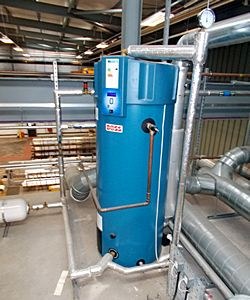
Preventing the spread of legionella bacteria
Temperature is the most straightforward and cost-effective way to control legionella bacteria in domestic hot and cold water systems. So, by monitoring the water temperature, we can help you keep Legionnaires’ disease at bay – and give you added peace of mind.
Keeping a close eye on your systems
 No one is more dedicated to keeping your water systems safe – and the people who are using them – than Dantek. By far the simplest way to do that, is by taking regular readings of the water temperature in your system – to spot and act on any fluctuations that could cause you problems.
No one is more dedicated to keeping your water systems safe – and the people who are using them – than Dantek. By far the simplest way to do that, is by taking regular readings of the water temperature in your system – to spot and act on any fluctuations that could cause you problems.
Our monitoring contracts include temperature checks and let you keep a constant check on what’s happening with your systems. Monitoring contracts are specifically tailored to your site, but will include temperature checks of:
- Cold water storage tanks
- Outlets including sentinel outlets
- Calorifier flow and return
- POU heaters
- Subordinate loops
- Combination water heaters
Although legionella bacteria are found naturally in our rivers and ponds, there have been no known cases of Legionnaires’ disease from this source. That’s probably because the water temperature is usually less than 20°c and too cold for it to grow. However, in man-made water systems, where the temperature can range between 20°c and 45°c, legionella bacteria can multiply freely. Over 60°c and it will be killed off.
Within hot and cold-water systems, there are specific areas where the temperature can be a risk:
- At the bottom of calorifiers/water storage vessels where cold water enters at the bottom and mixes with the stored hot water, lowering the temperature.
- In dead legs or little used outlets where water can sit stagnant and the temperature can rise above 20°c.
- When the incoming mains water temperature is above 20°c or there are areas within the cold-water system that are exposed to heat.
- In cold water storage tanks where stored water is above 20°c
Temperature monitoring made easy
We’re experts in temperature monitoring. So, you can leave it all in our capable hands.
It’s important to keep good records of your temperature monitoring to help you identify any issues and spot problems early. This can be a paper-based logbook, but we encourage all our customers to use our electronic logbook – it’s quick, simple and designed to help you make smart decisions and take prompt action.
